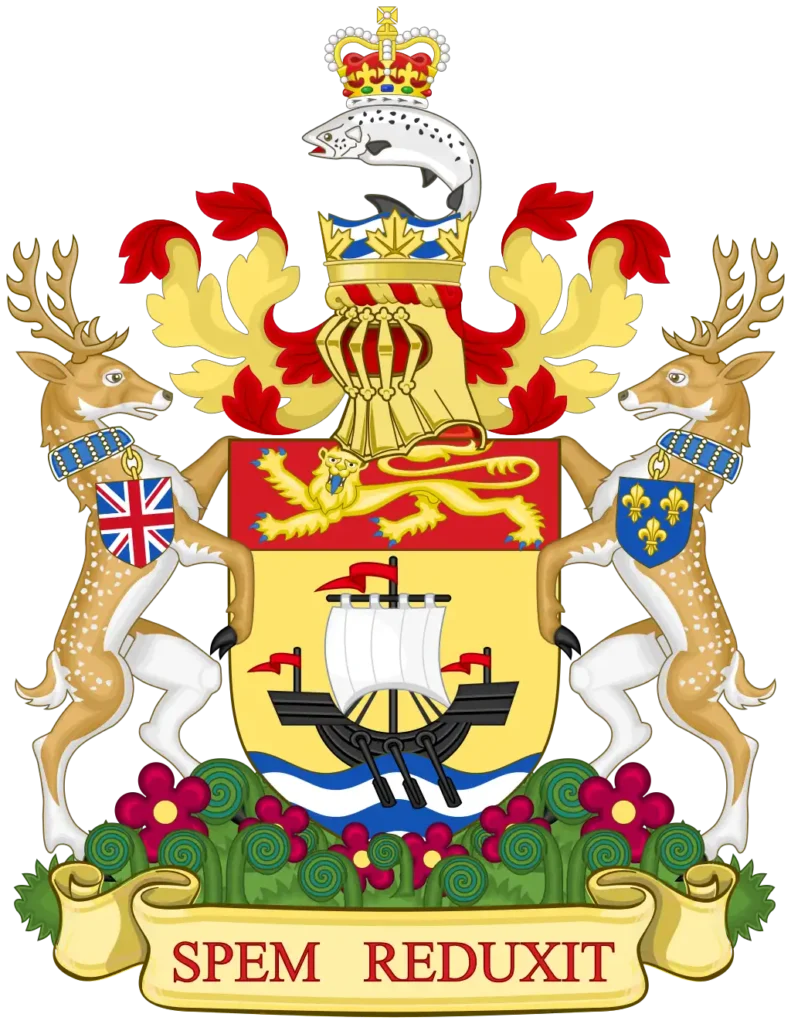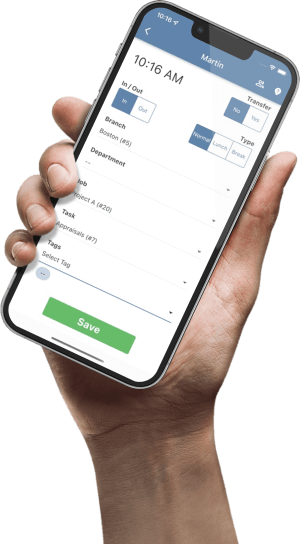Free New Brunswick Payroll Tax Calculator

How to Use the New Brunswick Payroll Tax Calculator (Step-by-Step)
Understanding your paycheck in New Brunswick can be straightforward with our Payroll Tax Calculator. Follow these simple steps to obtain an accurate estimate of your net pay:
Step 1: Enter Your Location and Filing Status
- Country: Ensure “Canada” is selected. (This is pre-filled.)
- Province/State: Choose “New Brunswick” from the dropdown menu. (This is pre-filled.)
- Federal Claim Amount: Enter your federal personal amount. This value influences the federal income tax withheld from your paycheck. (Refer to your TD1 form for guidance.)
- Provincial Claim Amount: Enter your New Brunswick provincial personal amount. This value influences the New Brunswick provincial income tax withheld from your paycheck. (Refer to your TD1NB form for guidance.)
Step 2: Input Your Pay Information
- Annual Pay Periods: Select how often you receive your paycheck (e.g., Bi-Weekly (26), Weekly, Monthly) from the dropdown. This is essential for accurate annual calculations.
- Gross Wage/Pay Period: Enter your total earnings before any deductions for the pay period. This is your gross pay.
- Pay Date: Select the pay date using the calendar tool. This is for your reference and does not affect the tax calculations.
Step 3: Calculate Your Taxes
Click the “Calculate →” button.
The calculator will instantly display your estimated:
- Pay Period Section:
- Taxable Income: The portion of your income subject to taxes for the pay period.
- Federal Tax: The estimated federal income tax withheld for the pay period.
- Provincial Tax: The estimated New Brunswick provincial income tax withheld for the pay period.
- Total Tax: The sum of federal tax and provincial tax for the pay period.
- Annual Section:
- Taxable Income: Your estimated annual taxable income.
- Federal Tax: Your estimated annual federal income tax.
- Provincial Tax: Your estimated annual New Brunswick provincial income tax.
- Total Tax: Your estimated total annual taxes.
- Pay Period Section:
Step 4: Review and Adjust (If Needed)
- Carefully review the calculated results.
- If you need to make changes, adjust the input fields and click “Calculate” again.
- To start a new calculation with different parameters, click the “New Calculation” button.
Important Notes:
- This calculator provides estimates based on the information you provide.
- Actual tax and deduction amounts may vary based on individual circumstances, additional deductions, and other factors.
- For precise tax calculations, consult a tax professional or refer to official Canada Revenue Agency (CRA) and New Brunswick provincial government resources.
- Keep your TD1 and TD1NB forms updated to ensure accurate tax withholding.
- New Brunswick specific deductions such as NB WCB are included within this calculator.
Found our Free New Brunswick Payroll Tax Calculator useful? Bookmark and share it.

Rules of Payment in New Brunswick
This section outlines the key regulations regarding payment of wages to employees in New Brunswick, as governed by the Employment Standards Act.
Frequency of Payment
- Minimum Payment Interval: Employers in New Brunswick are legally obligated to pay their employees at least once every 16 calendar days.
- Wage Accrual: On each payday, employees must receive all wages and commissions earned up to seven days prior to that payday. This ensures that employees are paid for their recent work in a timely manner.
Form of Payment
- Currency: All payments must be made in Canadian dollars.
- Acceptable Payment Methods: Employers can pay their employees via:
- Cheque.
- Direct deposit to the employee’s personal bank account.
Pay Statements (Pay Stubs)
- Mandatory Provision: Employers are required to provide each employee with a detailed pay statement on every payday.
- Required Information on Pay Statement:
- The start and end dates of the pay period.
- The employee’s gross wages for that period.
- A clear breakdown of all deductions, including the amount and description of each deduction.
- The employee’s net pay.
- Electronic Pay Statements:
- If an employer chooses to provide pay statements electronically at the workplace, they must:
- Ensure the employee has confidential access to their electronic pay statement.
- Provide a means for the employee to print a paper copy of their statement.
- If an employer chooses to provide pay statements electronically at the workplace, they must:
Tips, Gratuities, and Employer-Imposed Surcharges
- Employee Ownership: Tips, gratuities, and employer-imposed surcharges are the sole property of the employee to whom or for whom they are given.
- Prohibition on Withholding: Employers are strictly prohibited from withholding or treating these amounts as part of the employee’s wages.
- Surcharge Distribution: Employer-collected surcharges must be distributed to the relevant employees no later than the next regular payday following the collection.
- Tip Pooling: Specific rules apply to the pooling of tips. Employers should contact the Employment Standards Branch for detailed information on these regulations.
Final Payment After Employment Cessation
- Regular Wages: All wages that would normally be due on the next regular payday must be paid to the employee at that time.
- Outstanding Wages and Benefits: All other outstanding wages, commissions, vacation pay, and other benefits must be paid to the employee on the following payday, but no later than 21 calendar days after the employee’s last day of employment.
Late or Missing Pay Cheques
- Initial Action: Employees should first attempt to resolve the issue directly with their employer.
- Escalation: If the employer fails to rectify the problem, the employee should contact the Employment Standards Branch for assistance and to file a complaint.
Deductions from Wages
- General Guidance: The Employment Standards Act does not explicitly detail all permissible deductions.
- Labour and Employment Board Criteria: The Labour and Employment Board has established criteria for permissible deductions.
- Employer Consultation: Employers are strongly advised to contact the Employment Standards Branch before making any deductions from an employee’s wages, except for legally mandated deductions such as Employment Insurance (EI), Canada Pension Plan (CPP), and court-ordered deductions.
- Legal Deductions: deductions that are required by law, such as garnishments, EI, and CPP, are allowed.
Payroll Records in New Brunswick
This section outlines the legal requirements for employers in New Brunswick regarding the maintenance and retention of payroll records, as mandated by the Employment Standards Act.
Employer's Obligation to Maintain Payroll Records
- Mandatory Record Keeping: Employers in New Brunswick are legally required to maintain detailed and accurate payroll records for each employee.
- Required Information: These records must include, but are not limited to, the following information:
- Employee’s full name, current address, date of birth, and Social Insurance Number (SIN).
- The employee’s date of commencement of employment.
- The number of hours worked by the employee each day and each week.
- The employee’s wage rate and gross earnings for each pay period.
- A detailed breakdown of each deduction from the employee’s gross earnings, including the amount and reason for the deduction.
- The dates of vacation taken, vacation pay due or paid, and the dates of payment.
- Public holiday pay due or paid, and the dates of payment.
- The employee’s net amount of money paid for each pay period.
- Dates and reasons for any leave of absence taken by the employee, along with any relevant documentation or certificates.
- The date of any dismissal or layoff, and the dates of any related notices.
- The employee’s date of cessation of employment.
- Any other relevant information pertaining to the employer/employee relationship.
Record Retention and Location
- Retention Period: Employers are required to retain these payroll records for a minimum of 36 months (three years). This requirement applies even after an employee’s employment has ended.
- Location of Records: These records must be maintained within the province of New Brunswick.
Inspection and Auditing of Records
- Employment Standards Officer Authority: An Employment Standards Officer is authorized to enter any employer’s office or premises for the purpose of inspecting, auditing, or examining employment records.
- Access to Records: Officers may request access to all books of account and are permitted to make copies of these records to ensure compliance with the Employment Standards Act.
Consequences of Non-Compliance
- Failure to Maintain Accurate Records: If an employer fails to maintain accurate payroll records as required by the Employment Standards Act, the Employment Standards Branch may accept the employee’s evidence regarding their employment.
- Burden of Proof: In such cases, the burden of proof shifts to the employer, who must then demonstrate that the employee’s evidence is incorrect. This highlights the importance of meticulous and accurate record-keeping by employers.
Additional Information
For further clarification or assistance, employers and employees can contact the Employment Standards Branch:
- Toll-Free Information: 1 888 452-2687
- Website: www.gnb.ca/labour


What's New as of January 1, 2025: Key Changes to Payroll Deductions
This section highlights the major updates and changes to payroll deductions, effective January 1, 2025. It’s crucial for employers and payroll administrators to understand and implement these changes to ensure compliance and accurate payroll processing.
Important Notice: Proposed Legislative Changes
- This guide reflects income tax changes that have been recently announced. It is important to note that, at the time of publication, some of these proposed changes have not yet been enacted into law.
- Despite their proposed status, we strongly recommend that employers utilize the new payroll deduction tables provided in this guide for withholding purposes, beginning with the first payroll in January 2025. This proactive approach will help minimize potential adjustments and ensure smoother transitions once the proposed changes are officially legislated.
Key Change: Second Additional CPP Contributions (CPP2)
- Background:
- As outlined in Canada Pension Plan Regulations Subsection 5.1 (1), for the year 2024 and onwards, pensionable earnings that fall between the Year’s Maximum Pensionable Earnings (YMPE) and a second, higher earnings ceiling (the Year’s Additional Maximum Pensionable Earnings or YAMPE) are subject to CPP2 contributions.
- Significant Change for 2025:
- Effective January 1, 2025, the YAMPE will increase substantially. Specifically, the YAMPE will be approximately 14% higher than the YMPE.
- This is a significant increase from the 2024 calculation, which was approximately 7% higher than the YMPE.
- Impact: This increase in the YAMPE will result in higher CPP2 contributions for employees who earn within this expanded range. Employers will need to adjust their payroll systems to accurately calculate and withhold these increased contributions.
- Implications for Employers:
- Employers must update their payroll systems and software to reflect the new YAMPE and calculate the corresponding CPP2 contributions accurately.
- Clear communication with employees regarding these changes is essential to ensure they understand the adjustments to their pay.
- It is very important to stay up to date on any changes that the government may make to these values.
Recommendations:
- Employers should immediately review and update their payroll processes to incorporate these changes.
- Utilize the updated payroll deduction tables provided in this guide for all payroll calculations starting in January 2025.
- Stay informed about any legislative updates or clarifications regarding these proposed changes.
- Consult with payroll professionals or the Canada Revenue Agency (CRA) for further guidance.
New Brunswick Provincial Income Tax for 2025
Provincial Indexing and Tax Rates
Effective January 1, 2025, the New Brunswick provincial income tax system will undergo adjustments due to annual indexing. To account for fluctuations in the Consumer Price Index, the province has implemented an indexing factor of 2.7%. This indexing directly impacts the provincial income tax thresholds and the non-refundable personal tax credit amounts.
Specifically, the tax rates and income thresholds for 2025 are structured as follows: For taxable income ranging from $0.00 to $51,306.00, the provincial tax rate is 9.4%. For income between $51,306.01 and $102,614.00, the tax rate is 14%. Income falling between $102,614.01 and $190,060.00 is taxed at 16%, and any income exceeding $190,060.00 is taxed at 19.5%. These tax brackets are applied incrementally, with a constant dollar amount added to each bracket’s calculation to ensure accurate taxation.
Personal Amounts and Tax Credits
Furthermore, the non-refundable personal tax credits, which influence the amount of provincial tax an individual owes, have also been indexed. For 2025, the basic personal amount is set at $13,396. The maximum spouse or common-law partner amount is $11,550, and the maximum amount for an eligible dependant is also $11,550. These adjustments to the personal amounts will automatically be applied to employees’ tax calculations, regardless of whether or not they submit Form TD1NB, 2025 New Brunswick Personal Tax Credits Return. However, for those seeking detailed information regarding personal amounts and specific claim codes, Form TD1NB, 2025 is the recommended resource. Employers should be aware of these changes to accurately calculate and withhold provincial income tax from their employees’ wages starting in 2025.

Disclaimer: The content provided on this webpage is for informational purposes only and is not intended to be a substitute for professional advice. While we strive to ensure the accuracy and timeliness of the information presented here, the details may change over time or vary in different jurisdictions. Therefore, we do not guarantee the completeness, reliability, or absolute accuracy of this information. The information on this page should not be used as a basis for making legal, financial, or any other key decisions. We strongly advise consulting with a qualified professional or expert in the relevant field for specific advice, guidance, or services. By using this webpage, you acknowledge that the information is offered “as is” and that we are not liable for any errors, omissions, or inaccuracies in the content, nor for any actions taken based on the information provided. We shall not be held liable for any direct, indirect, incidental, consequential, or punitive damages arising out of your access to, use of, or reliance on any content on this page.
Trusted By
Trusted by 3.2M+ Employees: 21 Years of Service Across Startups to Fortune 500 Enterprises
Join our ever-growing community of satisfied customers today and experience the unparalleled benefits of TimeTrex.










Strength In Numbers
Join The Companies Already Benefiting From TimeTrex
Time To Clock-In
Start your 30-day free trial!
Experience the Ultimate Workforce Solution and Revolutionize Your Business Today
- Eliminate Errors
- Simple & Easy To Use
- Real-time Reporting

Saving businesses time and money through better workforce management since 2003.
Copyright © 2025 TimeTrex. All Rights Reserved.
